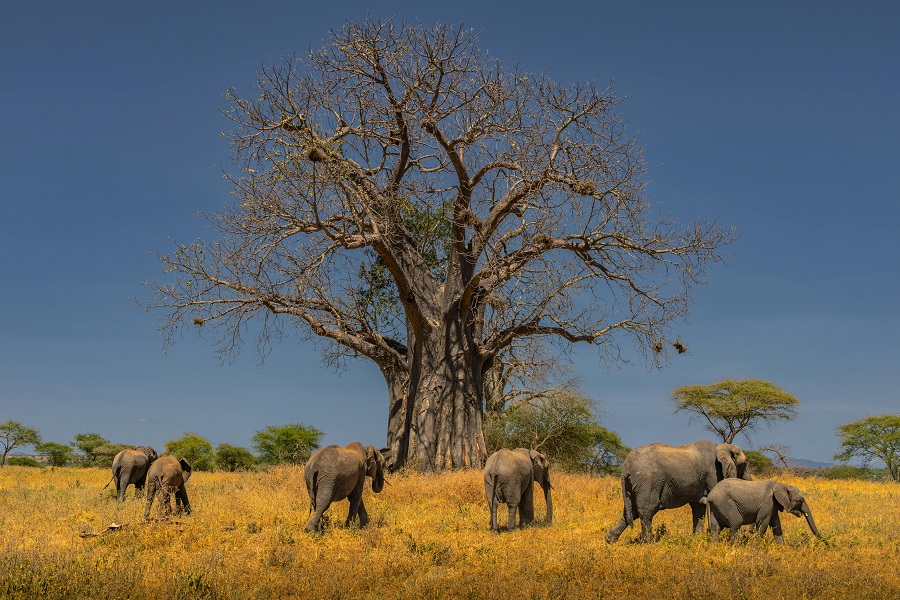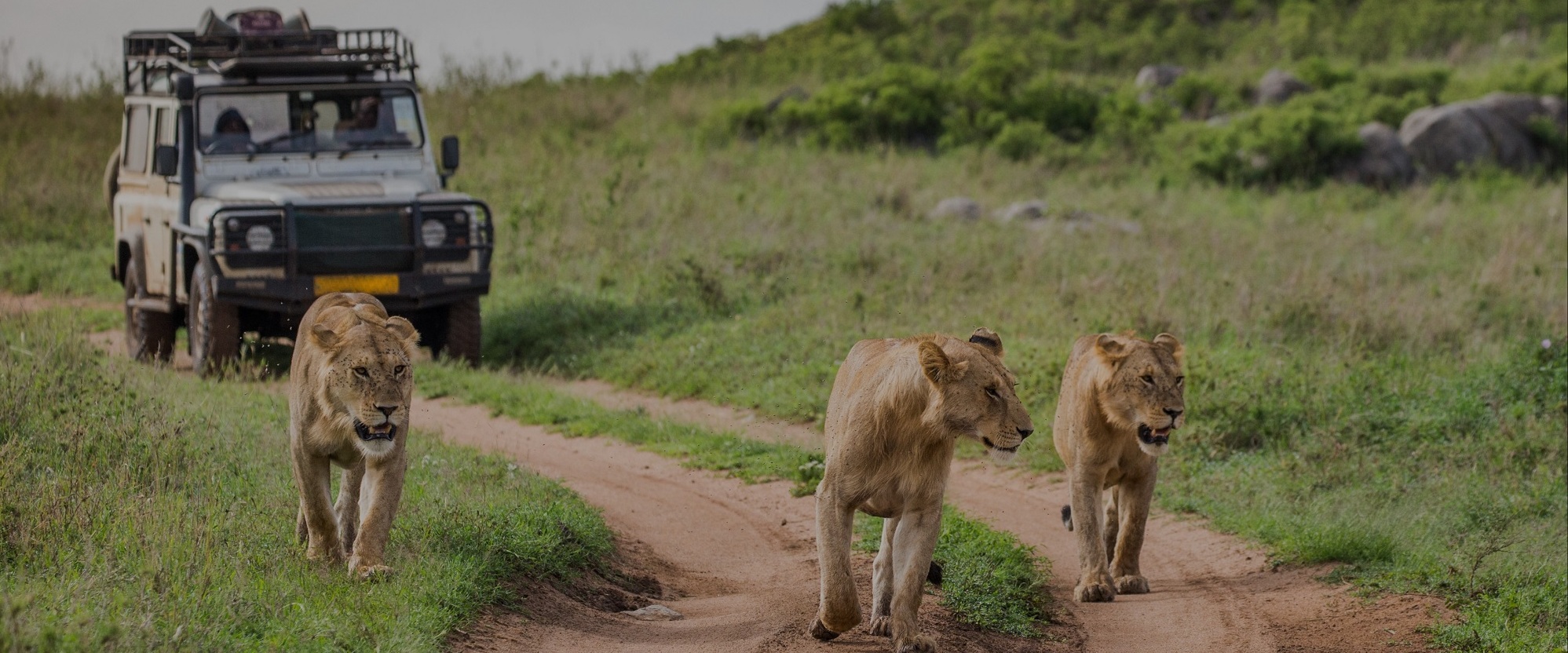
Serengeti or Masai Mara: Which one to choose for your first African safari?
A safari in Africa is a dream vacation for many, and when it comes to choosing the right destination for your first safari trip, two names dominate the conversation: the Serengeti National Park in Tanzania and the Masai Mara National Reserve in Kenya. Both are legendary, home to abundant wildlife, breathtaking landscapes, and the famed Great Migration. But which one offers a better safari experience for a first time visitor. In this blog, we will provide all the relevant details to help you make an informed decision.
Size and Landscape
The Serengeti National Park spans close to 15,000 square kilometers, making it one of the largest and most diverse ecosystems in Africa. Joining it in continuity is the Ngorongoro Conservation Area, Manyara and Tarangire National Park. Together these North Tanzania National Parks comprise the Serengeti ecosystem comprising an area of more than 30,000 square kilometers where animals thrive in their natural habitats.
The vast, open plains of the Serengeti seem to stretch infinitely, offering an unparalleled sense of space and freedom. You’ll encounter golden savannas, acacia-dotted woodlands, rocky outcrops, and seasonal rivers, each supporting unique wildlife populations.
In contrast, the Masai Mara covers only 1,500 square kilometers – which is a fraction in comparison. While, this makes it easier to spot wildlife, but it also means that the Mara can feel more crowded, especially during peak seasons.
Wildlife Encounters
Both parks are teeming with wildlife, including the famed Big Five (lion, leopard, elephant, buffalo, and rhino). However, the Serengeti’s sheer size allows for a greater variety of ecosystems, making it home to larger numbers of animals. With fewer vehicles per sighting, encounters feel more intimate and authentic.
The Masai Mara, due to its smaller size, offers a denser concentration of wildlife. Sightings are frequent and almost guaranteed, but this also means multiple vehicles crowding around the same animals, which can detract from the wilderness experience.
The Great Migration
If witnessing the migration is your priority, the Serengeti offers a more prolonged and varied experience, from calving season in the southern Ndutu plains (January to March) to the perilous Grumeti River (May-June) and Mara crossings (July-August). Every calendar year, the herds spend close to nine months in Serengeti and three months in Kenya.
Both parks play host to the legendary Great Migration, where over two million wildebeest, zebras, and gazelles traverse the plains in search of greener pastures. While the Masai Mara experiences the migration from July to October, the migration spends most part of the year in Serengeti, making Tanzania the true stage for this incredible spectacle.
Tourist crowds
The Serengeti’s remote wilderness and large size means fewer tourists per square kilometer and a more exclusive experience. Safari lodges and camps are well spread out, ensuring that game drives feel like true expeditions into the wild.
Masai Mara, on the other hand, is more accessible from Nairobi, making it a popular choice for short safaris. However, this accessibility leads to a high influx of visitors, especially during peak season. If you’re looking for an intimate, undisturbed safari, the Serengeti holds the edge.
Lodging and Safari Styles
Both destinations offer a range of accommodations, from ultra-luxurious lodges to budget-friendly tented camps. The Serengeti, with its sheer size, offers more secluded and high-end options, including mobile camps that move with the migration, ensuring you are always at the heart of the action. During a Serengeti Safari you will stay inside the park limits.
Masai Mara also has good lodging, but due to its compact nature, some camps are closer together, making the wilderness feel slightly less remote. Seasoned travelers may feel a lack of deep immersion with nature in Masai.
Time to Visit
The Serengeti is almost a year-round destination due to its vast expanse and diverse ecosystems. The dry season (June to October) offers prime wildlife viewing, while the wet season (November to May) brings lush landscapes and dramatic thunderstorms, perfect for photography.
The Masai Mara is best visited from July to September, coinciding with the migration’s river crossings. However, outside of these months, game viewing can be slightly less dramatic compared to the Serengeti.
Ngorongoro Conservation Area
Ngorongoro Conservation Area is an unmissable gem on any trip to the Serengeti. Known as the ‘Garden of Eden,’ this UNESCO World Heritage Site is home to one of the most unique ecosystems on the planet. It boasts the world’s largest inactive, intact, and unfilled volcanic caldera, creating a breathtaking natural amphitheater teeming with wildlife.
Inside the crater, you will witness an astonishing diversity of animals, including the Big Five thriving in their natural habitat. Lake Magadi, a striking alkaline lake in the southwest of the crater, is a haven for thousands of lesser flamingos, painting the water pink with their presence. Beyond the crater, the conservation area is also home to Maasai communities, who have lived in harmony with nature for centuries, offering visitors a glimpse into their rich culture.
A visit to Ngorongoro is not just about wildlife – it’s about experiencing nature in its purest form. Whether you are a nature lover, a photography enthusiast, or simply seeking a once-in-a-lifetime adventure, Ngorongoro offers an unforgettable journey into one of Africa’s most pristine landscapes.
Which One Should You Choose?
The choice between the Serengeti and Masai Mara depends on what kind of safari experience you seek.
Both parks are exceptional. If you want a quick, action-packed safari with frequent wildlife sightings and easy access, Masai Mara is a great choice. But if you crave vast, unspoiled landscapes, immersive solitude and wilderness, and a front-row seat to the full spectacle of the Great Migration, Serengeti quietly steals the show.




